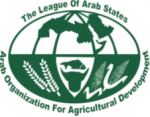This report analyzes key market trends in Sudan from February to June 2025, focusing on the prices, availability, and quality of essential commodities—cereals, vegetables, animal products, agricultural inputs, fuel, and exchange rates. Consistent with previous editions, it reveals significant spatial and temporal disparities across Sudan’s 18 states.
Cereals showed mixed trends. Wheat prices stabilized in June after a mid-May spike, while sorghum and millet fluctuated modestly. Wheat flour prices continued rising. Perceived availability and quality, particularly of wheat and wheat flour, deteriorated in June, with highest prices in conflict-affected and remote areas. Vegetables—particularly tomatoes and potatoes—experienced sharp price hikes in June, largely due to seasonal pressures and logistical disruptions. Onion prices were more stable but showed regional variation.
Animal products faced upward price pressure and volatility. Prices of lamb, beef, and eggs rose steadily; chicken and fish were erratic, and milk prices fluctuated. Availability declined, especially for beef and eggs. Perceived quality improved for meat but dropped for chicken and fish. Other staples, including sugar, cooking oil, fava beans, and oilseeds, had relatively stable trends overall, but prices varied widely by state. Sugar and fava beans rose sharply, particularly in South Kordofan and Kas sala.
Agricultural inputs showed moderate price fluctuations. Improved seed varieties remained costlier than local ones, with peaks for wheat and potato seeds. Fuel prices in parallel markets spiked in April–May before easing in June. South Kordofan and Central Darfur recorded the highest prices.
Exchange rates continued to diverge between official and parallel markets, with wide regional dis parities—Khartoum, Gedaref, and North Kordofan reported the highest parallel rates.
Read the full report here
